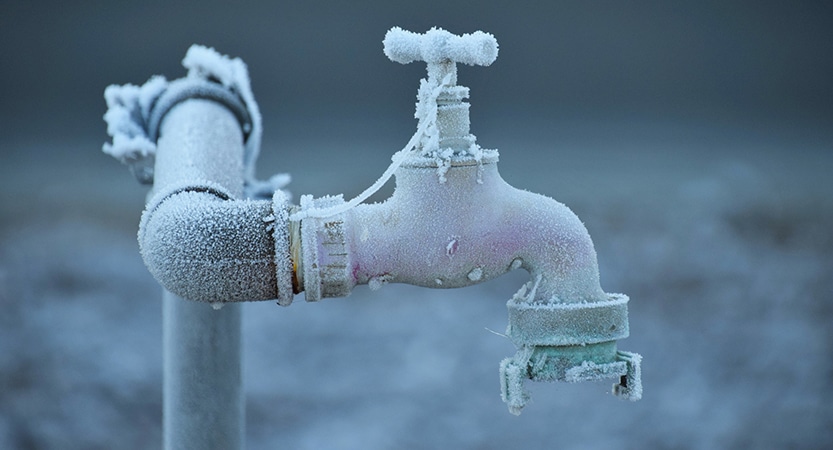Everybody has their private perception when it comes to Preventing and dealing with frozen pipes.

Winter can damage your plumbing, particularly by freezing pipelines. Below's just how to avoid it from happening and what to do if it does.
Introduction
As temperature levels decline, the threat of frozen pipelines increases, possibly bring about pricey fixings and water damages. Understanding just how to stop frozen pipelines is crucial for house owners in cool climates.
Comprehending Frozen Pipes
What creates pipelines to ice up?
Pipelines ice up when subjected to temperature levels below 32 ° F (0 ° C) for prolonged periods. As water inside the pipelines ices up, it expands, taxing the pipeline walls and possibly creating them to break.
Dangers and problems
Icy pipes can lead to water supply interruptions, residential property damages, and costly fixings. Ruptured pipes can flooding homes and cause substantial architectural damages.
Indicators of Frozen Water Lines
Determining frozen pipelines early can avoid them from bursting.
Exactly how to identify frozen pipes
Look for reduced water circulation from faucets, unusual smells or noises from pipes, and visible frost on exposed pipelines.
Prevention Tips
Insulating vulnerable pipelines
Wrap pipes in insulation sleeves or utilize warm tape to shield them from freezing temperature levels. Concentrate on pipes in unheated or external locations of the home.
Heating strategies
Keep indoor spaces sufficiently warmed, especially locations with pipes. Open cupboard doors to allow cozy air to distribute around pipelines under sinks.
Shielding Outside Pipes
Yard pipes and outside faucets
Detach and drain pipes yard tubes prior to wintertime. Mount frost-proof spigots or cover outdoor taps with insulated caps.
What to Do If Your Pipes Freeze
Immediate activities to take
If you think icy pipelines, keep faucets available to eliminate stress as the ice thaws. Make use of a hairdryer or towels soaked in warm water to thaw pipelines gradually.
Long-Term Solutions
Structural modifications
Take into consideration rerouting pipelines away from exterior wall surfaces or unheated locations. Add added insulation to attic rooms, cellars, and crawl spaces.
Upgrading insulation
Buy high-quality insulation for pipelines, attic rooms, and wall surfaces. Correct insulation helps keep regular temperature levels and lowers the danger of icy pipes.
Verdict
Stopping icy pipes needs proactive actions and quick responses. By understanding the reasons, indications, and safety nets, home owners can safeguard their pipes during winter.
5 Ways to Prevent Frozen Pipes
Drain Outdoor Faucets and Disconnect Hoses
First, close the shut-off valve that controls the flow of water in the pipe to your outdoor faucet. Then, head outside to disconnect and drain your hose and open the outdoor faucet to allow the water to completely drain out of the line. Turn off the faucet when done. Finally, head back to the shut-off valve and drain the remaining water inside the pipe into a bucket or container. Additionally, if you have a home irrigation system, you should consider hiring an expert to clear the system of water each year.
Insulate Pipes
One of the best and most cost-effective methods for preventing frozen water pipes is to wrap your pipes with insulation. This is especially important for areas in your home that aren’t exposed to heat, such as an attic. We suggest using foam sleeves, which can typically be found at your local hardware store.
Keep Heat Running at 65
Your pipes are located inside your walls, and the temperature there is much colder than the rest of the house. To prevent your pipes from freezing, The Insurance Information Institute suggests that you keep your home heated to at least 65 degrees, even when traveling. You may want to invest in smart devices that can keep an eye on the temperature in your home while you’re away.
Leave Water Dripping
Moving water — even a small trickle — can prevent ice from forming inside your pipes. When freezing temps are imminent, start a drip of water from all faucets that serve exposed pipes. Leaving a few faucets running will also help relieve pressure inside the pipes and help prevent a rupture if the water inside freezes.
Open Cupboard Doors
Warm your kitchen and bathroom pipes by opening cupboards and vanities. You should also leave your interior doors ajar to help warm air circulate evenly throughout your home.

As a passionate reader on Helpful Tips to Prevent Frozen Pipes this Winter, I was thinking sharing that short article was smart. Sharing is nice. Helping people is fun. I am grateful for being here. Come back soon.
Call Today